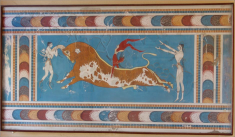Speaker
Description
Search for a two nucleon system or the dineutron (n2) as a bound particle or the two nucleon nuclei without protons was raised for a first time in 1946 [1]. In this publication, the possibility to generate mono energy neutrons as well as the dineutron in the d-t nuclear reaction was considered. Since that time until nowadays the dineutron was the subject to hunt in nuclear reactions on light nuclei. In the same time, according to the Pauli principle the two neutrons, composing such exclusive quantum system as the dineutron, are allowed to exist with antiparallel spins or in a singlet state only. Wherein, taking into account charge independence (isotopic invariance) of nuclear forces and our knowledge about a singlet state of the deuteron, one can unambiguously affirm that such a singlet state of the dineutron is unbound by definition. Therefore, during last years main efforts were targeted at dineutron search in nuclear reactions on nuclei, located far from beta-stability valley, characterized by neutron excess and possessing the neutron halo or the neutron skin. This direction in nuclear physics is entitled as the dineutron correlations.
In 1972 A.Migdal published a paper [2], where the formation of the dineutron in a bound state was predicted following to escape of the two paired up neutrons from compound nucleus. It is worth noting that this correlated escape can take place for the case when the kinetic energy of the two neutrons is much less of their interaction energy and if single particle levels are formed within the potential well of the heavy nucleus but beyond its radius. Finally, in [2] a theoretical justification has been presented in support of existence of such levels in the energy range [0-0.4] MeV to bind the two neutrons in one particle known as the dineutron.
In our study of nuclear reactions with neutrons adsorption by 159Tb nuclei, we observed one more nuclear reaction channel, namely: 159Tb(n,n2)158gTb. The main features of this nuclear reaction channel were the detection of gamma-rays due to decay of 158gTb nuclei in ground state, and buildup of such nuclei for 6.85 MeV energy impinging neutrons, what is 1.3 MeV below the threshold energy of the corresponding 159Tb(n,2n)158gTb nuclear reaction. Main results of this study were published in [3]. The only drawback of this experiment was the statistical significance of our results below 5σ. An additional argument in support of dineutron existence hypothesis would be observation of a bound dineutron in a corresponding nuclear reaction on another heavy nucleus.
In this work we present the results of dineutron formation in the 197Au(n, n2)196gAu nuclear reaction. The golden foils of 0.999 grade were irradiated with d-D neutrons at MGC-20E cyclotron at MTA Atomki, Debrecen, Hungary. The energy of impinging neutrons was ~ 2 MeV below the threshold energy of the 197Au(n,2n)196gAu nuclear reaction, which equals 8.11 МеV. Results of bound dineutron detection are presented below. The statistical significance of 355.7 keV gamma peak areas exceeded 5σ. We also conducted a very thorough analysis of all possible systematic uncertainty contributors. Therefore, the existence of a bound dineutron was proved in our paper [4], and the only possible disintegration mode of such absolute neutron exceed nucleus is a beta-minus decay with the formation of the deuteron.
We used 355.684 keV gamma line to determine cross-sections for 197Au (n,n2)196gAu nuclear reaction. Thus, for deuteron energy 3.459 MeV, minimal neutron energy 6.09 MeV, average neutron energy 6.19 MeV and maximal neutron energy 6.39 MeV reaction cross-section was 180±60 μb based on 9.4 σ statistical significance of gamma-peak. For deuteron energy 3.523 MeV, minimal neutron energy 6.175 MeV, average neutron energy 6.275 MeV and maximal neutron energy 6.455 MeV reaction cross-section was 37±8 μb based on 6.4 σ statistical significance of gamma-peak.
Beside the induced activity of 158gTb in the instrumental gamma-ray spectra of irradiated Tb sample, we also observed gamma-peaks due to de-excitation of 160Dy because of beta-minus decay of 160Tb into 160Dy. In the beginning these gamma-peaks were mainly from the 159Tb(n,γ)160Tb nuclear reaction, later - from the nuclear fusion reaction 158Gd(d,γ)160Tb, or directly from the 158Tb(d,γ)160Dy fusion reaction [5,6]. Based on results of 160Tb/160Dy induced activity measurements during 2.5 years after neutron irradiation complete, the half-year of such system was determined as 123 ±24 d rather than 72.3 d reference value.
We also have developed the mathematical model to describe nuclear processes of low energy nuclear fusion for 158Gd or 158Tb with the deuteron at room temperature conditions. This allowed us to calculate a modified half-life for such nuclear system under simultaneous fusion and decay. Our result of calculation equals 126.8 d and found to be in a very good agreement with experimental value.
Therefore, in our work we demonstrated that generation of bound dineutrons along with heavy nuclei in the output channel of neutron-induced nuclear reactions does not only represent a new nuclear reaction type and channel, but also provides prerequisites for fusion between heavy and light nuclei at room temperature conditions and affects half-lives of nuclear reaction products. These our results represent new frontiers in low energy nuclear physics.
[1] M.Y.Colby, R.N.Little, Phys. Rev. 70, 437 (1946).
[2] A.B. Migdal, Yad. Fiz. 16, 427 (1972) / Sov. J. Nucl. Phys. 16, 238 (1973).
[3] I.Kadenko, Europhys. Lett. 114, 42001 (2016).
[4] I.Kadenko et al, Europhys. Lett. 131, 52001 (2020).
[5] I.Kadenko, N.Sakhno, Nucl. Phys. A 994, 1231660 (2020).
[6] I.Kadenko, N.Sakhno, Acta Phys. Pol. B 83 No.1, Vol.51 (2020).
Details
Prof. Dr. Ihor M. Kadenko,
International Nuclear Safety Center of Ukraine,
Department of Nuclear Physics,
Taras Shevchenko National University of Kyiv, Kyiv, UKRAINE
https://www.univ.kiev.ua/
http://atom.univ.kiev.ua/
| Is this abstract from experiment? | Yes |
|---|---|
| Name of experiment and experimental site | Experimental site: Atomki, MTA, Debrecen Hungary |
| Is the speaker for that presentation defined? | Yes |
| Internet talk | Yes |
